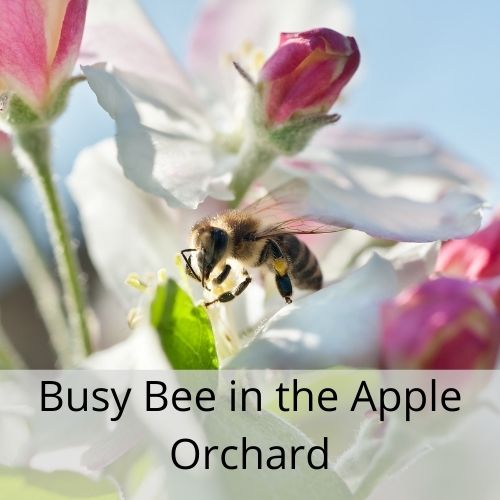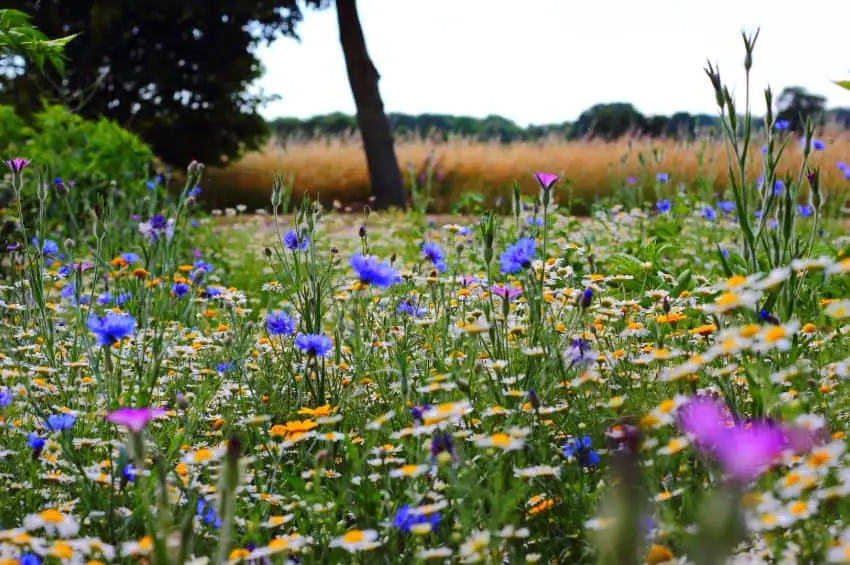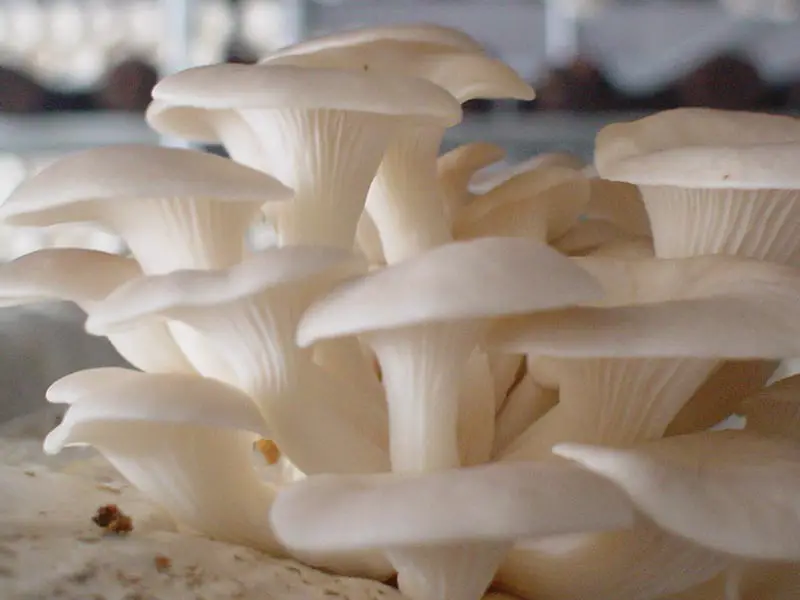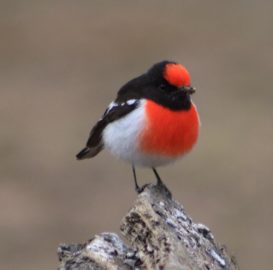It is important when considering bee hives for honey production that we also consider their food source. A good beekeeper will know the flowering plants that bring the best yield for the bees and for his honey collections. This knowledge is rarely passed on by other beekeepers. The commercial beekeeper knows when and where to expect the nectar flow and will time his hive moves to ensure his bees have access to these. The amateur beekeeper may find himself feeding his bees on sugar syrup or pollen patties over the winter months particularly. The amateur beekeeper does however have the advantage of being able to plant appropriate annual and periennel flowering plants to supplement the beehive.
Bees like and need a varied diet just like us. Planting many and varied flowering species can help to build diversity and resilience into your beekeeping endeavors. It is important to build in native and non-native specimens when planning your garden. This not only increases biodiversity but also increases the chances of having some flowering plantings at all times. Plantings should be in small clumps or layers of 3 – 4 of the same plant where possible from the ground up.
Some quick tips before we continue.
- Don’t use pesticides. (most chemicals are non selective meaning you may poison your bees)
- Use local Native plants. (many native plants are attractive to honey bees)
- Use a range of colours. (bees have great eyesight and love colour)
- Plant in groups. (bees are more likely to forage where there is more of one plant)
- Use a range of different flower shapes (open or cup shaped flowers are best for honey bees but other pollinators will appreciate your efforts as well)
- Plant where bees like to visit (bees like to be in the sun)
- Provide access to clean water (bees need water too but make sure they can land safely)
- Variety is key ( have a variety of flowering plants all year round available for your bees nutrition)
Below we have produced a list for Southern Queensland centered on the Granite Belt as this is where we live and our bees benefit from these plantings. The list is useful to anyone on sandy loam or granitic soils in a cool temperate climate. We attempt here to ensure we have enough variety of plantings including Australian Natives, to ensure year-round nectar and pollen gathering by our bees. The tables are broken up into types of plants with a colour-coded Summer – Winter flowering time for quick identification. For example, if you need winter flowering plants for groundcover simply look in the ground covers list for plants with blue flowering time.
While the list is extensive it is by no means a complete list of every plant suited to this area or to bees in general. Some plants are better suited to native bees while others are targeted towards the European Honey Bee. We are always looking to add more bee-friendly plantings to our permaculture-designed property. You are welcome to use these tables to plan your plantings around the wonderful work of bees. Good Luck.
Groundcovers
| Botanical Name | Common Name | Flowering Time | Nectar/Pollen |
| Brachyscome multifida | Cut-Leafed Daisy | Late Winter to early Autumn Long flowering | Nectar & Pollen |
| Bracteantha viscosa | Sticky everlasting daisy | Spring/Summer | Nectar & Pollen |
| Brunoniella australis | Blue Pincushion Flower | Autumn – Spring | Nectar |
| Ceanothus spp. | California Lilac | Long Flowering | Bee Magnet High Nectar |
| Chrystophelium species | Paper Daisy | Spring -Summer | Nectar & Pollen |
| Correa glabra | Rock Correa | Autumn/Winter | Nectar |
| Centaurea cyanus | Cornflower | Spring/Summer | High Nectar |
| Calluna vulgaris | Heather/Erica | Winter | Nectar |
| Cuphea spp. | Mexican Heather | Long Flowering | Bee Magnet High Nectar High Pollen |
| Dampiera diversifolia | Kangaroo Lobelia | Spring Summer | Nectar & Pollen |
| Dianella species | Native Flax | Spring/Summer | Nectar & Pollen |
| Gazania spp. | Gazania | Various | HIgh Value Pollen |
| Goodenia species | Goodenia | Spring to Autumn | Nectar |
| Grevillea | Bronze Rambler | Year Round | High Nectar |
| Grevillea laurifolia | Royal mantle prostrate | Autumn/ winter | Nectar |
| Hardenbergia violacea | Hardenbergia | Spring | Nectar & Pollen |
| Hebe spp. | Hebe/Veronicas | Year Round | Good Nectar Good Pollen |
| Hibbertia pedunculata | Stalked Guinea Flower | Late Spring/Summer | Native Bees |
| Leptecophylla juniperina | Mountain Berry | Autumn/Spring | Excellent Nectar No Pollen |
| Lobularia maritima | Sweet Alyssum | Winter Spring | Good Pollen |
| Lotus corniculatus | Birdsfoot Trefol | Spring/Summer | Good Nectar High Pollen |
| Mentha x piperita | Peppermint | Spring/ Summer | Good Nectar Good Pollen |
| Myosotis spp. | Forget me Nots | Spring/Summer | High Nectar Good Pollen |
| Origanum spp | Oregano/Margoram | Summer | High Nectar |
| Phacelia tanacetifolia | Lacy Phacelia | Long Flowering | High Nectar High Pollen |
| Ribes spp. | Currents, Berries | Spring/Summer | High Nectar Good Pollen |
| Rosa spp | Roses (Singles) | Spring/Summer | Excellent Pollen |
| Rubus spp. | Blackberry, Raspsberry | Summer | High Nectar |
| Scaevola humilis | Fan Flower | Sept – Dec | Native Bees Nectar |
| Salvia species | Sages | Spring/Summer Autumn | High Nectar |
| Symphiocarpos albusd | Snow Berry | Summer | High Nectar No Pollen |
| Tropaeolum spp | Nasturium | Long Flowering | High Pollen |
| Thymus spp | Thyme including Native Thyme | Spring/Summer | Major Source Nectar |
| Walhenbergia communis | Native Rosemary | Summer/Autumn | Nectar |
| Verbena spp. | Verbena | Summer/Autumn | Good Nectar Good Pollen |
| Zinnia spp | Zinnia | Long Flowering | Good Nectar Good Pollen |

Shrubs
| Botanical Name | Common Name | Flowering Time | Nectar/Pollen |
| Abelia x grandiflora | Abelia | Summer | High Nectar |
| Alyogyne huegelii | Native Hibiscus | Spring/Summer | unknown |
| Baeckea virgata | Heath Myrtle | Summer | Nectar |
| Banksia species | Banksia | Early Winter | Good nectar Pollen |
| Buddelja Davadii | Butterfly Bush | Spring & Autumn | Good Nectar Pollen |
| Borago officinalis | Bee Bush | Long Flowering | Good Nectar Med Pollen |
| Callistemon Species | Bottlebrush | Spring & Autumn | High nectar/med pollen |
| Cassinia longifolia | Cauliflower Bush | Summer | Pollen /nectar |
| Ceanothus | Blue Pacific | Summer | Nectar Pollen |
| Clematis pubescens | Common Clematis | Long flowering | Excellent Pollen |
| Correa pulchella | Native Fushia | Long flowering season | Nectar (Buzz Pollinators) Pollen |
| Coreopsis grandiflora | Tickseed, Coreopsis | Spring/Summer | Good Pollen |
| Crowea saligna | Crowea | Autumn-Winter | Nectar Pollen |
| Echium candicans | Pride of Madeira | Spring/Summer | High Nectar Low Pollen |
| Eremophila deserti | Ellangowan, Dogwood | Autumn/Spring | Major Pollen |
| Eremophila duttonii | Emu Bush | Spring/Winter | Good Nectar Good Pollen |
| Escallonia spp | Escallonia | Spring/Summer | Bee Magnet Nectar & Pollen |
| Geijera parviflora | Wilga | Spring/Summer | Average Nectar Good Pollen |
| Goodenia Ovata | Hop Goodenia | Spring/Summer | Low Nectar Med Pollen |
| Grevillea victoriae | Grevillea Murray Valley Queen | Spring/Summer | Nectar |
| Hakea species | Hakea | Late Winter | Nectar/ Low Pollen |
| Hebe species | Hebe | Year Round | Nectar |
| Iberis sempervirens | Candy Tuft | Spring | Good Nectar |
| Lavandula angustifolia | Lavender | Year Round | Good Nectar Good Pollen |
| Leptospermum species | Tea Tree | Spring/Summer | High Nectar (Jelly Bush can produce thick honey) |
| Jacksonia scoparia | Dogwood | Spring | Low Nectar High Pollen |
| Melissa Officinales | Lemon Balm | Spring/Summer | High Nectar High Pollen |
| Melaleuca species | Paper Barks, Myrtles etc | Spring/Summer | Nectar/Pollen |
| Papaver nudicaul | Iceland Poppy | Spring/Summer | High Pollen |
| Pelargonium rodneyanum | Magenta Storksbill | Summer/Autumn | unknown but visited by bees |
| Prunus lusitanica | Bay Leaf/ Portugal Laurel | Spring | Useful Nectar Medium Pollen |
| Prostanthera lasianthos | Alpine Mint Bush | Spring/Summer | Nectar |
| Rosmarinus officinalis | Rosemary Bush | Winter | High Nectar |
| Satureja montana | Winter Savoury | Summer | Medium Nectar |
| Thryptomene saxicola | Thryptomene | Autumn/Winter | Good Nectar Good Pollen |
| Westringa Longifolia | Native Rosemary | Late Winter/Spring | High Nectar |

Trees Less than 10 metres
| Botanical Name | Common Name | Flowering Time | Nectar/Pollen |
| Banksia ericifolia | Banksia Giant Candles | Autumn-Winter | High Nectar High Pollen |
| Banksia integrifolia | Coastal Banksia | Autumn-Winter | High Nectar High Pollen |
| Callistemon | Kings Park, & Harkness | Spring | High Nectar Med Pollen |
| Citrus spp. | Lemon, Grapefruit, Orange | year round | High Nectar |
| Eucalyptus apiculata | Narrow-leaved mallee ash | Winter – Spring | Med Nectar Med Pollen |
| Eucalyptus cunninghamii | Cliff Mallee Ash | Autumn | Nectar/Pollen |
| Prunus cerasifera | Cherry Plum | Autumn-Winter | Nectar/Pollen |
| Prunus spp | Plum | Spring | Nectar/Pollen |

Trees Greater than 10 metres
| Botanical Name | Common Name | Flowering Time | Nectar/Pollen |
| Acacia doratoxylon | Currawong | Spring | Low Nectar Excellent Pollen |
| Acacia implexa | Hickory Wattle | Summer | Good Pollen |
| Acacia melanoxylon | Blackwood | Late Autumn/Winter | Good Pollen |
| Angophora costata | Cabbage Gum | Spring | Excellent Pollen |
| Angophora floribunda | Rough Barked Apple Gum | Summer | Excellent Nectar Excellent Pollen |
| Brachychiton populneus | Kurrajong | Autumn/Summer | Medium Nectar Good Pollen |
| Castenaea sativa | Chestnut | Spring | High Nectar High Pollen |
| Chamaecytisus palmensis | Tagaste/ Tree Lucerne | Spring | Good Nectar High Pollen |
| Corymbia eximia | Yellow Bloodwood | Early Spring | Low Nectar High Pollen |
| Diospyros kaki | Persimmon | Spring | High Nectar High Pollen |
| Eucalyptus blakelyi | Blakelys Red Gum | Spring/Summer | Medium Nectar Medium Pollen |
| Eucalyptus camaldulensis | River Red Gum | Summer | High Nectar High Pollen |
| Eucalyptus crebra | Narrow Leaf Iron Bark | Winter/Spring | Medium Nectar Medium Pollen |
| Eucalyptus mannifera | Brittle Gum | Spring/Summer | Low Nectar Medium Pollen |
| Eucalyptus melanophloia | Silver Leaf IronBark | Spring/Summer | High Nectar Excellent Pollen |
| Eucalyptus melliodora | Yellow Box | Late Spring/Summer | High Nectar No Pollen |
| Eucalyptus pauciflora | Snow Gum | Spring/Summer | High Nectar High Pollen |
| Eucalyptus polyanthemos | Red Box | Spring/Summer | Medium Nectar Low Pollen |
| Eucalyptus viminalis | Manna Gum | Summer/Autumn | Medium Nectar Medium Pollen |
| Jacaranda mimosifolia | Jacaranda | Spring | Abundant Nectar |
| Liriodendron tulipifera | Tulip Tree | Spring | Abundant Nectar Abundant Pollen |
| Malus spp. | Apple | Spring | Good Nectar Good Pollen |
| Tetradium daniellii | Beebee Tree | Spring/Summer | Bee Magnet Excellent Nectar Excellent Pollen |

References:
Bee Friendly -A planting guide for European honeybees and Australian native pollinators Mark Leech 2012
ACT for Bees 2017 Bee Friendly Canberra
Torfoot Farm Permaculture Planting List 2021
Australian Plants for Canberra Regions Gardens and other cool climate areas, Society for growing Australian Plants Canberra Region 2020
the Australian Beekeeping Manual Robert Owen 2015



